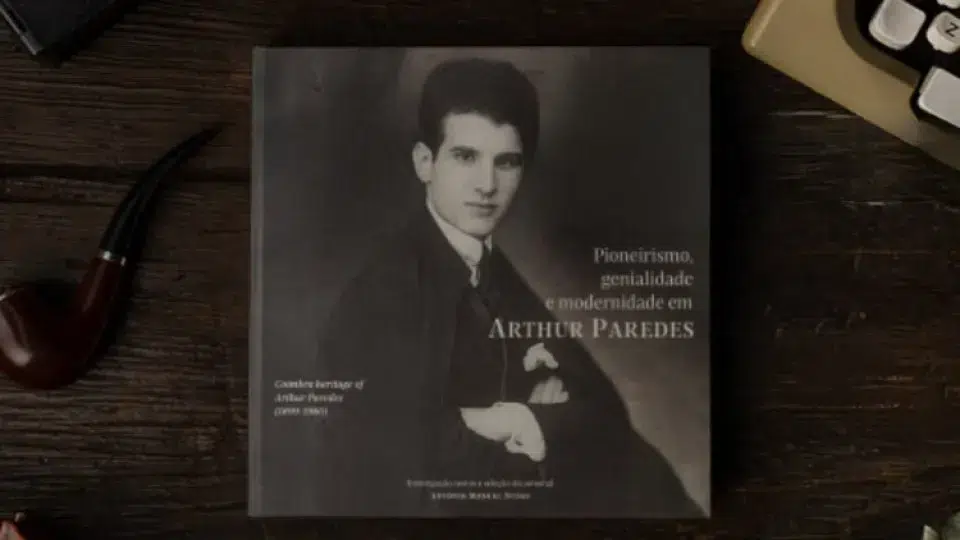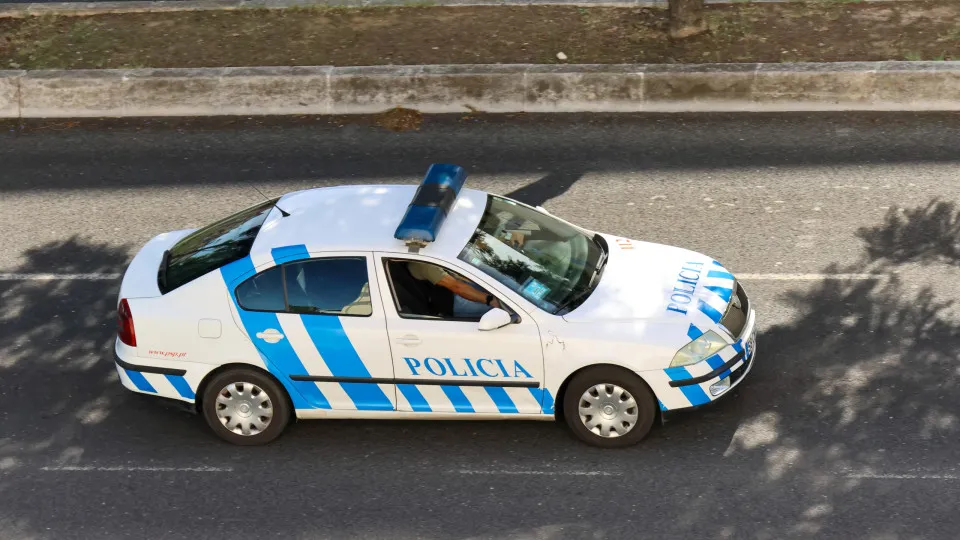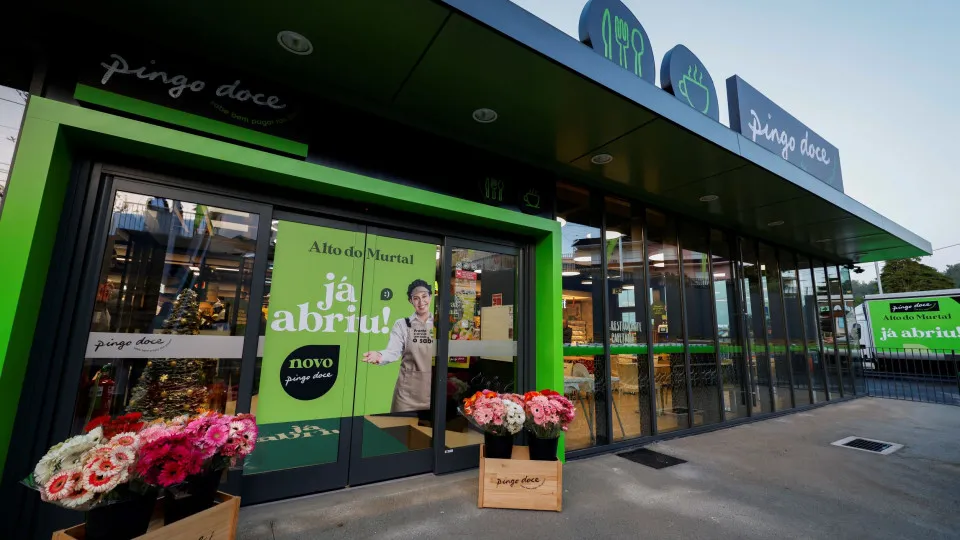
The book, richly illustrated and drawing from personal archives, includes six CDs featuring the complete recordings of Arthur Paredes (1899-1980), around 20 previously unreleased tracks, and recordings dating back to 1905 by various performers, some of whom were his contemporaries.
The work, published by Tradisom Produções Culturais, is being presented today at 6 p.m. at the Portuguese Society of Authors in Lisbon.
Arthur Paredes “remains a significant legend today, especially in the academic circles of Coimbra, although his life remains a considerable mystery,” stated the author to the Lusa agency. The researcher credits Arthur Paredes with granting “significant autonomy to Coimbra’s music,” reconfiguring the tradition and “endowing the guitar with an orchestral and concert-based dimension that was not fully established.”
Discussing the six CDs included in the book, which aim to rescue surviving material, António Manuel Mendes expressed regret that much of Arthur Paredes’s work was not recorded.
“My guiding principle regarding the CDs accompanying the book, in relation to Arthur Paredes, was to remaster various sound sources predating the young Arthur Paredes, as well as those concurrent with the time he made his mark in 1920, to better understand him; [to ascertain through recordings] what makes him unique, where he converged, what he replicated, and what was new in his work,” he explained.
“Regarding Arthur Paredes, the idea was to rescue everything he recorded and bring to light what he chose not to record commercially, but which was preserved in private collections, rehearsal tapes… Bringing all this knowledge to the public,” he added.
The author acknowledges that if the musician were alive, he might not agree with this effort, “because he was a perfectionist,” but notes that “a considerable collection of sources, previously unknown to the broader public, is now available.”
“Many of the rehearsals [that are coming to light now] help understand the construction of the genius that was Arthur Paredes,” assured António Manuel Mendes.
Arthur Paredes is the father of the guitarist and composer Carlos Paredes (1925-2004), and António Manuel Mendes highlights “the DNA, a genetic line” that traces back to Carlos Paredes’s great-grandfather, António Paredes.
The researcher noted the contrasting contexts in which Arthur and Carlos Paredes developed their careers.
“Carlos [Paredes], when he began to rise, especially in Portugal, benefitted from new media instruments ranging from cinema to television, from sound documentaries to audiovisual media, to theater – he was heavily involved in sociopolitical intervention theater. The era of vinyl records had different potential with those mass-produced records in large venues. Carlos Paredes had access to sound amplification instruments that did not exist during his father’s time, and he leveraged them greatly.”
António Manuel Mendes recalls Carlos Paredes’s early “wide-ranging” trips abroad: performing in Cuba, at the Sydney Opera House in Australia; in 1967, he performed at the Cannes Festival and had a nearly month-long run at the Olympia in Paris. Despite the existing resources, the author laments, none of these performances were recorded or filmed, which is regrettable.
Regarding the work “Pioneirismo, Genialidade, e Modernidade em Arthur Paredes,” António Manuel Mendes emphasized how he contextualized the Coimbra musician and the “universe he created.”
The author meticulously lists all the actors in Coimbra’s music scene, from city groups to the academy, to revue theater, heavily centered on improvised and amateur theater, a tradition maintained by students, particularly those completing their studies and bidding farewell with a Portuguese revue, featuring a strong musical component, which spawned the ‘Farewell Ballads.’
For the researcher, contextualization is “a duty: constructing the skeleton with flesh and blood.” “I had to do it. It is fundamentally an ethical commitment that I established in the 1980s with some people who knew Arthur Paredes and worked with him. There had to be an almost pedagogical effort to bring him to understanding.”
Arthur Paredes “was a very mysterious man, deeply averse to publicity, to photography, and this was a way of life he greatly passed on to his son.”
“What belongs to private life stays in private life, and Carlos had that same enormous reserve regarding his marriages, his children, what happened in prison in Caxias and Aljube [in Lisbon]. Indeed, there was that privacy about private life, which made accessing that knowledge very challenging. It was very difficult to piece together this family,” he affirmed.
In actuality, it is a musical dynasty beginning with Carlos Paredes’s great-grandfather, António Paredes, who hailed from a village in Mealhada municipality and settled in Coimbra working as a carpenter “and was already a popular guitarist.”
The dynasty continued through his sons, with both Gonçalo, Arthur Paredes’s father, and the other son, Manuel Rodrigues Paredes, who is featured on the CDs, “being renowned guitarists.”
In this work, the researcher seeks to define the Coimbra musical universe, establishing himself “as the main author insisting on the distinction between the song and the fado of Coimbra,” a distinction he has upheld since studying in Coimbra in the 1980s and has maintained in his studies and essays.
In 1999, he published ‘No Rasto de Edmundo Bettencourt, uma Voz para a Modernidade,’ which highlighted “this issue of Bettencourt and Arthur Paredes, his solo guitarist, who broke with the past and elevated this music to another dimension” – music that can be more accurately termed “the song of Coimbra,” including some melodies with a fado aspect.
According to the author, in the Coimbra tradition and in the university, “up to the 1990s, when people referred to ‘Paredes,’ it was Arthur Paredes,” whereas “in the context of Lisbon, in journalistic circles,” Paredes was Carlos – “largely due to the influence of Amália Rodrigues, who met Carlos Paredes in 1966, and invited him to perform at the Olympia,” in Paris. “Amália started referring to Carlos as ‘Paredes’ and the term stuck.”
Thus, according to the researcher, “there is a 30 to 40-year period” in which “two Paredes coexist”: the one referenced by Coimbra, Arthur, and the one referenced by the media, Carlos Paredes.
Arthur Paredes did not receive formal musical education and worked as an employee of the former National Overseas Bank.
Carlos Paredes’s technical training on the guitar came from his father, asserts António Manuel Mendes, noting that Carlos’s “large hand, with very long fingers and natural nails,” was like his father’s hand: “That type of hand, as well as the way of placing the hand, of striking the strings, comes from his father,” with whom Carlos Paredes was the second guitarist.
António Manuel Mendes claims a genetic component in the genius passed from father to son, “along with a series of behaviors visible in both, such as the enormous attention deficit, the lack of practical sense in daily life matters, the compulsion to rehearse three to four hours daily, the attitude of deprivation when deprived of the instrument, going three to four days without playing. These are traits found in both,” he observed.
Speaking about composition, the author stated, “Arthur was concerned with the rhythm’s nearly mathematical sense – his compositions maintain the rigor of the meter.” “Until [Arthur Paredes] arrived, guitars in Coimbra were played very slowly, sometimes disregarding the meter.”
“Arthur Paredes diverges from those codes, he is very mathematical, works by the metronome, is very concerned with pushing the singers, with rigorously harsh chords; there is a certain bitterness in him from being orphaned of his mother very young, and of his father at 15, 16 years old. There is revolt in this man that translates into how he plays, how he interprets.”
In the researcher’s view, Arthur Paredes made an epistemological break in the Coimbra musical tradition, “undoubtedly.”
“He was born into the Coimbra tradition, maintained some traditions, but then completely processed and reconfigured that music, endowing the guitar with an orchestral and concert-like dimension that was not fully established, ultimately granting major autonomy to Coimbra’s music.”
Arthur Paredes learned to play guitar at the age of 10, “but was already well-acquainted.”
“He systematized the tuning of the guitar to a lower, sweeter tone, more akin to the baritone voice, allowing the first and second tenors’ voices to shine, as a sort of duet is formed between this slightly lower instrumental mass and the higher-register male voices.”
António Manuel Mendes underlined that he is not a musician and that “this is not a work focused on musical analysis accompanied by scores, nor is it a musicological work; it is rather from the field of cultural and mental history, cultural anthropology, aiming to significantly promote Arthur Paredes while leaving the door open to new, more technical and methodological approaches.”
António Manuel Mendes was born in the Azores in 1965. A teacher and researcher, he has been a consultant on several projects, organizer of tribute and commemorative events related to the history of the Song of Coimbra, and a supervisor of academic works. He began investigating the Song of Coimbra in 1987.
His works include ‘Flávio Rodrigues da Silva, fragmentos para uma guitarra’ (2002), co-authored with José Paulo; ‘A Canção de Coimbra no século XIX / 1840-1900 (2002)’; ‘A viola vai na rua – memória sobre a viola toeira’ (2016), still unpublished; and ‘Repertório estrófico da Canção de Coimbra 1840-2015’, co-authored with José Anjos de Carvalho (2018).




